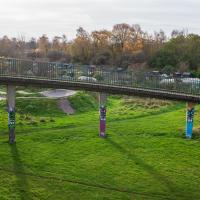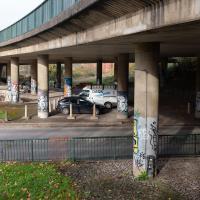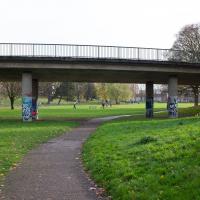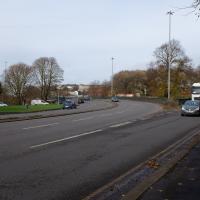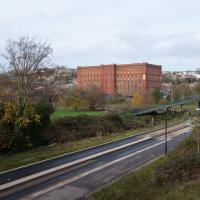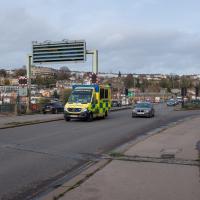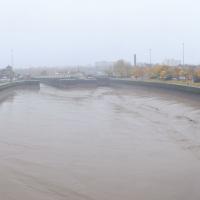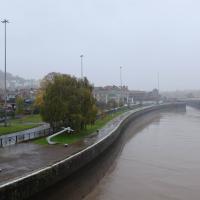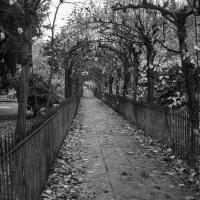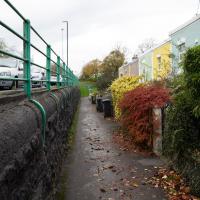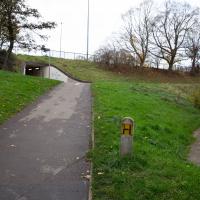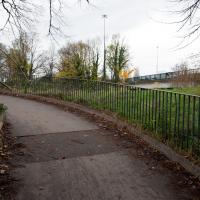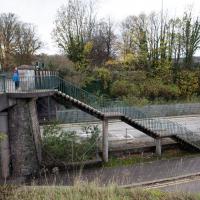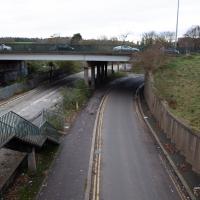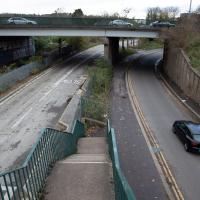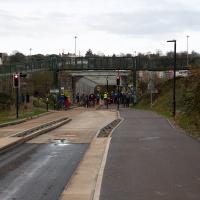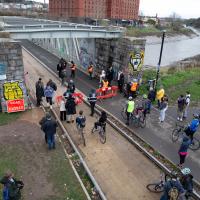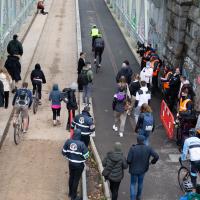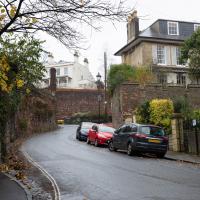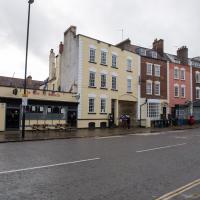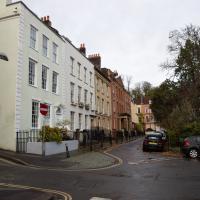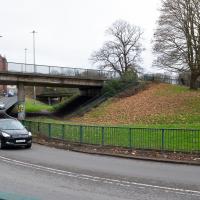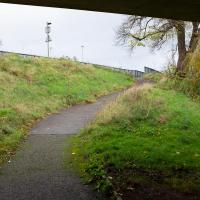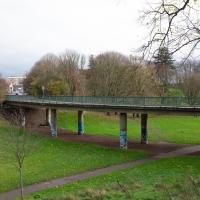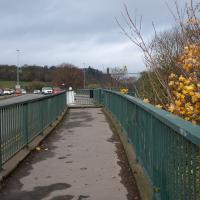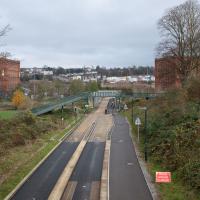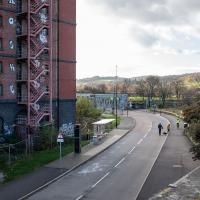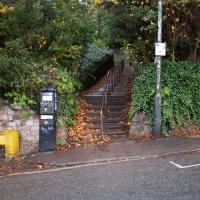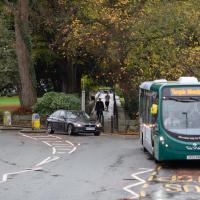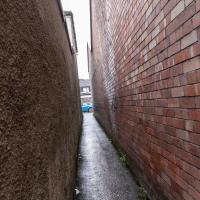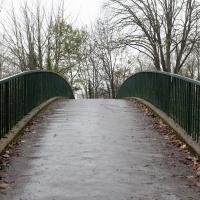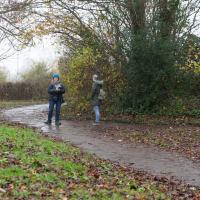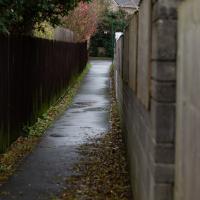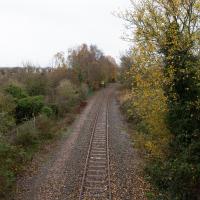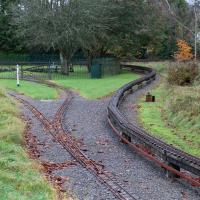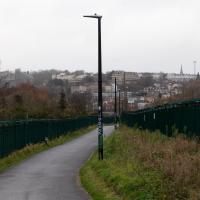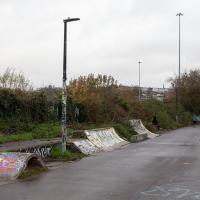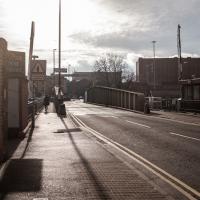Tagged: thoroughfare
Rabbits, bad pedestrian signage and good coffee
13 Nov 2020
A quick trip with the aim of finding a better way to Greville Smyth park and a good coffee. Sadly I was stymied yet again with the former—it turns out that you do apparently have to take a strange loop around the houses (or at least around the roads) to get to Greville Smyth any way other than my normal route, unless you're prepared to vault some railings. It may be that the disused steps from where the skater kids hang out to the flyover above might once have led to a shorter route, but it's hard to tell. The geography in the area has always confused me.
On the plus side, Rich, who runs Hopper Coffee from a Piaggio Ape does a great flat white and often has a good sign. (I collect cafe signs...)
The is the other place the sign to Greville Smyth Park takes you. That's where I just came from, damn it.
Presumably this is where you're meant to dash across the road to from the ramp that leads up from the sign on the far side.
You can just tell from the one light in the grille that I managed to catch that the blues and twos were running. It was more dramatic in person.
Misty Walk
30 Oct 2020
Something of a misty start took me around the viewpoint at the end of Spike Island and then on to try to find a new way into Greville Smyth Park. I got lost.
Hotwells and Clifton/Clifton Village
14 Nov 2020
A local walk with my friend Lisa in tow, including a coffee from the cafe in the Clifton Observatory, where I have fond memories of experiencing my first camera obscura, and cake from Twelve in Clifton Village, one of my favourite recent finds for both food and flat whites.
Sunday Afternoon
15 Nov 2020
A walk back from Bedminster to my place, mostly down Duckmoor Road, which I found a little dull—probably because it reminded me a little of the suburbs I grew up in on the outskirts of London—then held up slightly by some filming on Ashton Avenue Bridge. They were trying not to let the crowds build up too much in between takes, it seems, so it wasn't a long delay.
Dowry Square Jaunt
16 Nov 2020
A quick lunchtime jaunt to Dowry Square, which is very close to me but, being effectively a cul-de-sac as well as a square, I've probably only circumnavigated a couple of times in the last couple of decades.
It looks like the fish & chip shop might be getting a refurb, and the restaurant at the end, which used to be a great Persian place is apparently now a great Indian place. The bow-fronted place in the middle was a small "corner" shop for years, but there's barely any more space in there than there is in my living room so it must've been hard to keep it going. That closed down four or five years ago, I think.
In which our intrepid hero levels up.
The other way to get to Greville Smyth more quickly from there would be to go up that set of steps, but it would mean vaulting the railings, and I don't really do vaulting.
Quick Coffee
19 Nov 2020
A sunny day, and though I should have probably headed for less well-travelled territory I just headed over to the Marina to grab a flat white from Imagine That's horsebox café.
Clifton Village Mini Wander
20 Nov 2020
Just a quick wander up the hill to get a flat white from Twelve. I really enjoyed the spooky mannequin (?) in the window.
Many a time have I wandered down this little cut-through that joins Saville Place and the Fosseway. A shortcut through the Polygon starts me off, then it's pretty much a straight line up through to here and on to Queen's Road.
Bedmo and Ashton Court
21 Nov 2020
A rather more wide-ranging weekend wander with Sarah and Vik, taking in some mock Tudor bits of Bedmo (I should note that I've subsequently been corrected to "Bemmie", but I'm an outsider and have been calling it "Bedmo" for short for decades...), a chunk of Ashton, a path up Rownham Hill called Dead Badger's Bottom(!), The Ashton Court estate, a bit of the UWE campus at Bower Ashton, and some of the Festival Way path.
I have no idea how anyone managed to smack this street furniture so hard, or what direction they came from to do it. It's a pretty straight 30mph road right there, and this is only one side of the dual carriageway. Never seen so much as a near-miss there.
